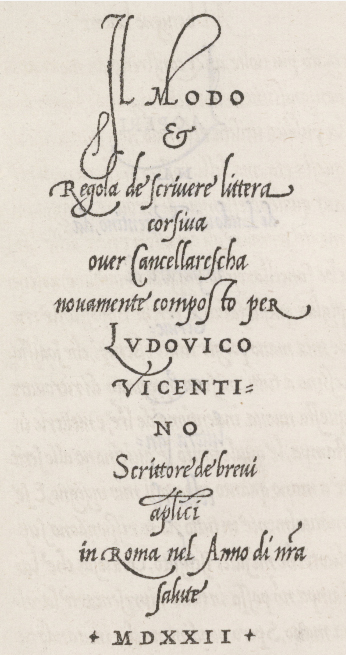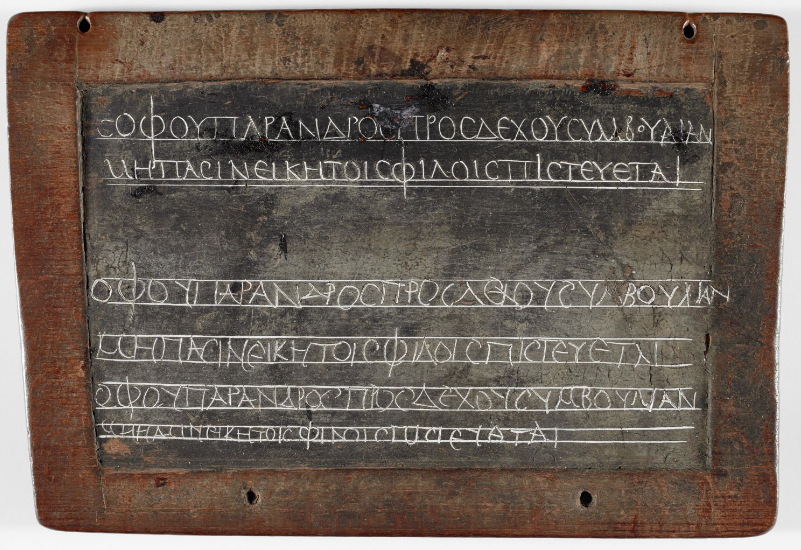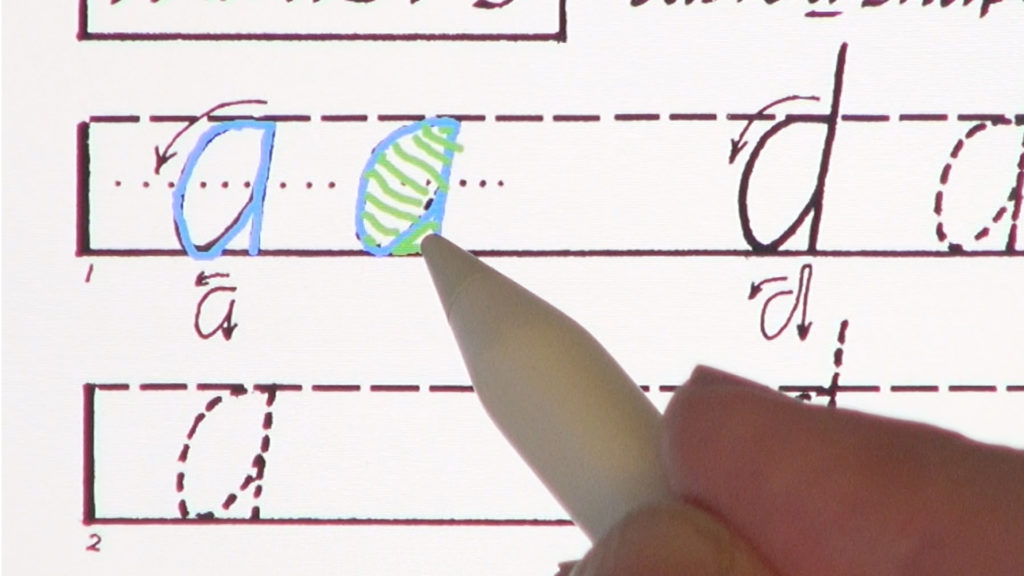The first handwriting instruction book made its debut 500 years ago.

Vatican scribes of the Italic Renaissance had invented a legible, versatile and beautiful hand based on the proportions of the golden rectangle and ancient Roman capital letters. The cancellerescha style of writing, now known as Italic, spread rapidly and became the model for new styles of type as well. It was the handwriting style of Michelangelo, Queen Elizabeth I, and countless others since. We assume that the popularity of this style was what inspired Ludovico Vincentino Arrighi in 1522 to publish his La Operina, a book of handwriting models in the new chancery style to be used for copywork.
This renaissance Italic became the progenitor for the handwriting styles —and styles of type — that we use today across the globe wherever the Latin-based alphabet is written.

Handwriting instruction by copying and tracing has been around for thousands of years. Students in ancient times used tablets of clay or wax, marking the surface with a stylus and then smoothing it over to write again.
One telling example of this is from a letter dating from the 7th century BCE, where the King of Assyria scolds his daughter-in-law for not doing her homework, literally saying, “Why are you not tablet-writing?”
Here is a much later example of student tablet writing from 2nd Century Egypt (written in Greek).

But Arrighi’s book presented two new ideas: Standardized instruction and literacy for the general population.
Today, we have a different sort of tablet and stylus, and no shortage of handwriting methods. And yet, literacy levels in schools across the US have remained stagnant and low, and there is an uneven distribution of handwriting instruction. New research suggests that handwriting is an integral part of the science of reading, literacy and college readiness. In other words, we write to learn.
At Handwriting Success, we’re connecting the dots with Getty-Dubay Italic handwriting that brings the spirit of Arrighi, and his handwriting, into the 21st century. Not only has the Getty-Dubay Italic Handwriting Series for K-6 been helping provide legible, practical handwriting to hundreds of thousands of students for over 40 years, it is now available for tablet and stylus. Our Handwriting Success App provides stand-alone year-long handwriting curricula in seven ebooks that students can write in.
So, are you tablet-writing?


